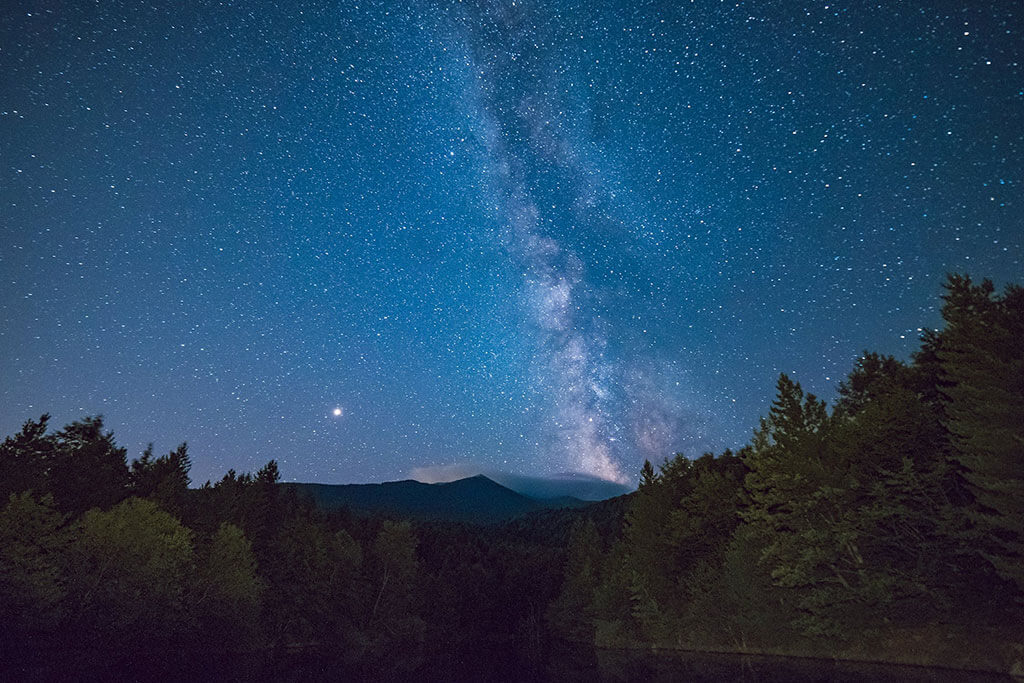
17
October
S. Walter Stewart Library: Chronicles of a Peculiar Universe: The Social Habits of Galaxies
Most galaxies enjoy the company of other galaxies and organize into various shapes known as the "cosmic web." Many of them also like to spin - creating beautiful disks of stars and gas. PhD student George Conidis examines our own galaxy, The Milky Way, and its friends to better understand the social habits of disk galaxies and how they spin.
Chronicles of a Peculiar Universe is a series of talks presented in collaboration with York University's Faculty of Science.

12
October
Lillian H. Smith Library: Chronicles of a Peculiar Universe: How to Get to Mars
For decades NASA has been sending orbiters, landers and rovers to Mars for research and exploration, and the agency is aiming to send humans to the Red Planet in the 2030s. Professor John Moores provides an overview of our past, present and future missions to Mars.
Chronicles of a Peculiar Universe is a series of talks presented in collaboration with York University's Faculty of Science.
Note: Speaker was previously Professor Robin Metcalfe who is not able present due to unforeseen circumstances. We apologize for any disappointment.

11
October
Danforth/Coxwell Library: Chronicles of a Peculiar Universe: Quasar, Quasar, Burning Bright
Quasars are the brightest objects in our Universe and are formed when matter spirals into supermassive black holes. They contain rotating disks as big as our solar system and hotter than the Sun. Professor Patrick Hall discusses these fascinating objects and how they tap the strong gravity of black holes.
Chronicles of a Peculiar Universe is a series of talks presented in collaboration with York University's Faculty of Science.

6
July
UofT AstroTour: Using Interstellar Plasma Lenses as Billion Kilometre Telescopes
Fifty years ago, two radio telescopes across Canada were combined to achieve the resolution of a telescope 3000 km across, a technique now known as VLBI. Interstellar plasma lenses bend light from sources like pulsars, creating multiple images of the same source on the sky. When we combine these images in the same way as radio telescope on Earth, we can measure the position and motion of their source. Since instead of being telescopes separated by 3000km these images are separated by billions of km, this results in remarkably high precision.

28
July
UofT Planetarium: The Underdogs of the Solar System – Moons, asteroids, comets and other small rocky objects
Showtimes: 7:00pm, 8:00pm, and 9:00pm
Often, when we think of the Solar System, we think of the planets and the Sun and nothing more. But what about all the other stuff? There are millions of asteroids in the asteroid belt, tens of millions of objects in the Kuiper belt, and probably trillions of objects in the Oort cloud—not to mention the hundreds of moons and dozens of dwarf planets that are members of the Sun’s extended family.

7
July
UofT Planetarium: The Underdogs of the Solar System – Moons, asteroids, comets and other small rocky objects
Showtimes: 7:00pm, 8:00pm, and 9:00pm
Often, when we think of the Solar System, we think of the planets and the Sun and nothing more. But what about all the other stuff? There are millions of asteroids in the asteroid belt, tens of millions of objects in the Kuiper belt, and probably trillions of objects in the Oort cloud—not to mention the hundreds of moons and dozens of dwarf planets that are members of the Sun’s extended family.

30
June
UofT Planetarium: The Underdogs of the Solar System – Moons, asteroids, comets and other small rocky objects
Showtimes: 7:00pm, 8:00pm, and 9:00pm
Often, when we think of the Solar System, we think of the planets and the Sun and nothing more. But what about all the other stuff? There are millions of asteroids in the asteroid belt, tens of millions of objects in the Kuiper belt, and probably trillions of objects in the Oort cloud—not to mention the hundreds of moons and dozens of dwarf planets that are members of the Sun’s extended family.

4
October
Pape/Danforth Library: Archaeoastronomy: The Astronomy of Civilizations Past
Join us as Dr. John Percy discusses how and why astronomy was important to early civilizations ranging from the seagoing Polynesians, to the builders of Stonehenge and the Great Pyramids, to our own First Nations. He will also briefly discuss the important roles of Chinese, Indian, and Islamic astronomy.

14
July
Dunlap Institute: Astronomy on Tap T.O.
Quench your thirst for astronomy!
On Friday, July 14, at The Great Hall! It'll be another fun evening of pints, astronomy news, mind-expanding talks, games, prizes, and Dunlap mechandise for sale!
Plus, following all the talks, there will be plenty of time for you to have all your cosmic questions answered by astronomers from the University of Toronto.

16
June
Solar System Social #5
Woodhouse Brewing Co. presents the latest round of Solar System Social, Toronto's planetary science speaker series.
